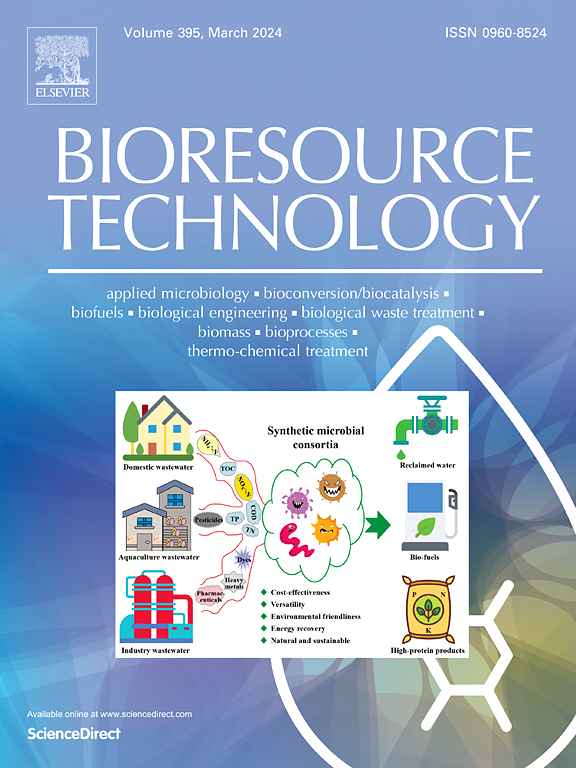Enhanced dye treatment and bioelectricity generation in microbial fuel cells: the role of magnetite-inoculated anode and cosubstrates
IF 9.7
1区 环境科学与生态学
Q1 AGRICULTURAL ENGINEERING
引用次数: 0
Abstract
This study investigated the influence of cosubstrate complexity and magnetite-inoculated anodes on microbial fuel cells (MFCs) treating synthetic dyeing wastewater (500 mgCOD/L, 50 mg/L Reactive Black 5). Two MFCs types were constructed: one with magnetite pre-inoculated anodes (MFCM) and another with sludge-only inoculated anodes (MFCS). Both MFCs were operated with either starch or ethanol as the cosubstrate, and in both cases, MFCM consistently outperformed MFCS. For instance, with starch, MFCM achieved 99 % decolorization and a peak voltage of 380.74 mV within 30 hours, compared to 89 % and negligible, unstable voltage in MFCS. A 1500 Ω resistance was optimal for decolorization and electricity generation in MFCM. Microbial analysis revealed that magnetite pre-inoculation enriched electroactive genera, enhanced diversity and extracellular electron transfer, and stabilized microbial networks across cosubstrates. These findings highlight the potential of magnetite pre-inoculated anodes as a novel practical strategy for early anode biofilm control, with significant implications for scalable MFCs applications.

微生物燃料电池中强化染料处理和生物发电:磁铁矿接种阳极和辅基质的作用
研究了共底物复杂性和磁石接种阳极对微生物燃料电池(mfc)处理合成印染废水(500 mgCOD/L, 50 mg/L活性黑5)的影响。构建了两种MFCs:一种是磁铁矿预接种阳极(MFCM),另一种是污泥接种阳极(MFCs)。两种MFCs均以淀粉或乙醇作为共底物进行操作,在这两种情况下,MFCM始终优于MFCs。例如,使用淀粉,MFCM在45 h内脱色率达到99% %,峰值电压为380.74 mV,而MFCS的脱色率为89% %,且电压可以忽略不计,不稳定。在MFCM中脱色和发电的最佳电阻为1500 Ω。微生物分析结果表明,预接种磁铁矿可丰富电活性菌属,增强细菌多样性和胞外电子转移,稳定共底物间的微生物网络。这些发现突出了磁铁矿预接种阳极作为早期阳极生物膜控制的一种新的实用策略的潜力,对可扩展的mfc应用具有重要意义。
本文章由计算机程序翻译,如有差异,请以英文原文为准。
求助全文
约1分钟内获得全文
求助全文
来源期刊

Bioresource Technology
工程技术-能源与燃料
CiteScore
20.80
自引率
19.30%
发文量
2013
审稿时长
12 days
期刊介绍:
Bioresource Technology publishes original articles, review articles, case studies, and short communications covering the fundamentals, applications, and management of bioresource technology. The journal seeks to advance and disseminate knowledge across various areas related to biomass, biological waste treatment, bioenergy, biotransformations, bioresource systems analysis, and associated conversion or production technologies.
Topics include:
• Biofuels: liquid and gaseous biofuels production, modeling and economics
• Bioprocesses and bioproducts: biocatalysis and fermentations
• Biomass and feedstocks utilization: bioconversion of agro-industrial residues
• Environmental protection: biological waste treatment
• Thermochemical conversion of biomass: combustion, pyrolysis, gasification, catalysis.
 求助内容:
求助内容: 应助结果提醒方式:
应助结果提醒方式:


